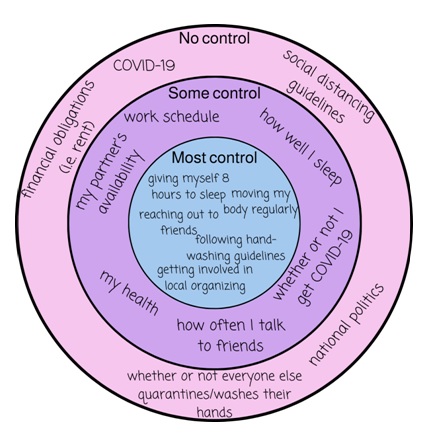Circle Of Control Activity To Relieve Anxiety Of Your Students
12th March 2022

Do your students get upset about things that are outside of their control?
Do you have learners who tend to react impulsively?
Circle of Control is a great way to boost students to focus on what they can control instead of lodging on the things that they can’t.
Anxiety is a distinctive human reaction to stress. Numerous things cause students to experience strong emotions. Though you cannot prevent your learners from feeling these feelings, still you CAN provide them with a few tools to process what they’re undergoing.
Benefits of Circle of Control
The circle of control majorly aims to help individuals recognise things they can and cannot control and where to focus their time.
- Constructive mindset
- Less distress
- Raises awareness of things that you want in your life
- Encourages to have the right mindset
- Reduce stress levels and increase happiness
And many more…
Circle of Control & Student Counselling
Circle of Control is a great resource for teaching students about what is within their control and what is not. The concept was introduced by author Steven Covey in his book 7 Habits Of Highly Effective People.
So, how does it help?
Using the Circle of Control strategy of thinking can be a supportive self-regulation tool for any strong emotions that your students might be going through. Whether they struggle to process anger, anxiety, distress, etc. focusing on what they can control can help them to feel less overwhelmed.
Rather than that, you can boost your students to think about what they can control in various uncontrollable situations. Furthermore, recognizing what’s in our control and what’s out of our control can prompt us to take action.
Certainly, for most of the learners, the idea of focusing only on what they can control might be unknown. Therefore, they at first need to be acquainted and comfortable with it before they’re able to use it in real life. Provide various examples and ask them to share if they think the situations are in their control or out of their control. For example, you can ask them about the weather or questions on a test and so on.
When you see your learners understand the idea, you can ask them to come up with their instances of things. Once the student has acknowledged what’s in his or her circle of control, create a plan going forward.

Now is the apt time to teach kids that there are certain things they can control, and some things they cannot. Elementary learners will love learning how to reduce their anxiety by using the circle of control. Certificate in Counselling course helps and prepares teaching professionals to counsel students effectively. This is an excellent lesson for students in all grades and is very versatile.
Implementing the circle of control in your lessons can be an empowering way to manage those strong emotions of your students!






